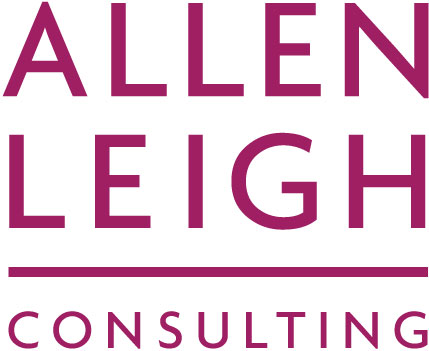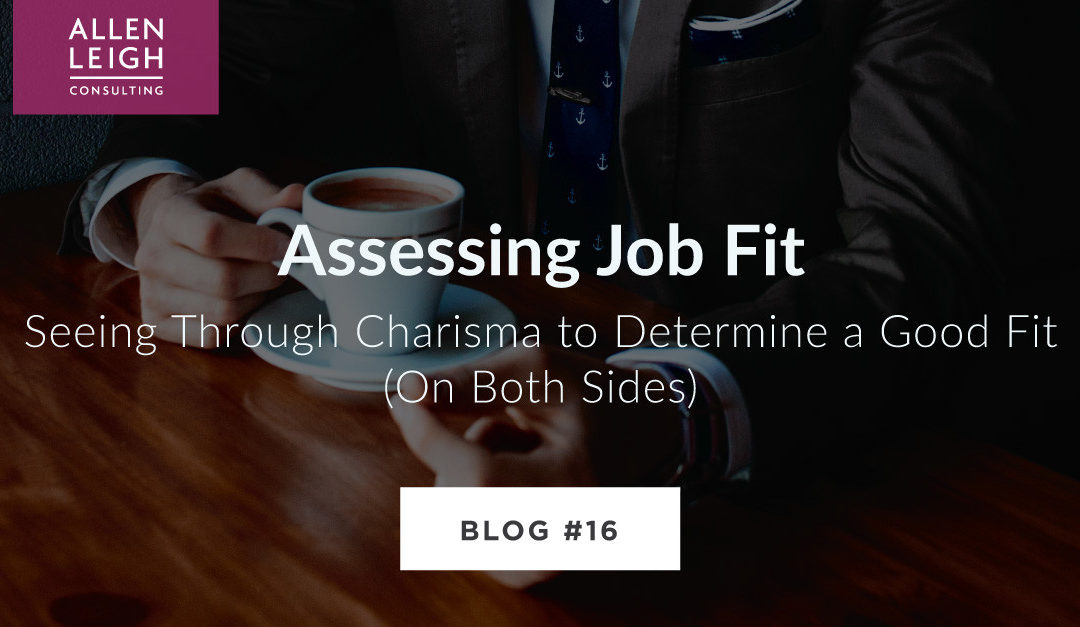Seeing Through Charisma to Determine a Good Fit (On Both Sides).
Are you looking for a rebound role or a serious commitment? I can honestly say that this question had never crossed my mind in business, until recently when a client asked this – not in the interview – but in our discussion about a potential candidate.
This question highlighted the parallels between the job search/recruitment process and a dating relationship. For good reason, most of the interview process is focused on getting to know each other at a fairly impersonal/job-related level and then both the candidate and hiring manager are left to make sense as to what the opportunity will look like in real life.
The candidate has a lot of questions – what is the culture like? How will I be treated? Are there perks? What if I screw up, is their support? The employer has many as well. Can I trust this person? Do they have the right skill set for the role? Will they fit in with the rest of the team? Will this person be hard or difficult to manage?
And then with as little as 1-2 hours of contact time both parties are required to make a very significant life decision – is the role worth the risk? A career transition is a BIG risk for both parties involved.
What we need to realize is that we all come into the recruitment process with some kind of baggage, and like the question “are you looking for a serious commitment”, it is helpful for both the hiring team and candidate to ground themselves into the reality of their current emotional state and discover what they truly are looking for out of the process.
I recall making a move into a very unstable role where I let my emotions get the better of me in my decision-making process. In relationships, we call this the honeymoon phase, where we see the opportunity/fit as more desirable or promising than it actually is. The same is true for the organization – “This person is going to be a game changer.” For hiring decisions to be most impactful, I find that it is best to slow the process down help both parties come to their own conclusion about the role.
Recently on a call with a potential candidate, I was told that I should have done a better job selling the opportunity that we were presenting. I was left wondering if this was true and that I should have upped my sales game. That was until a close colleague reminded me that rarely does a transition work well when it is oversold and that the best likelihood of a good transition comes from honest discussion.
The insights we provide here are intended for the hiring manager who needs to keep their emotions in check and see reality more clearly, but I feel that it is equally as important for the candidate to do the same. Here are a few tools and steps we have found helpful along the way to help with the transition and see through charisma to determine a good fit.
#1 Sleep on the hiring decision. It is important for hiring managers to not get caught up in the pressing demand to fill a role today. Especially in a hot talent market, there are lots of pressures from recruiters and internal leaders for you to make a hiring decision today or you may lose the candidate tomorrow. I personally am willing to take the chance of losing a candidate over making a gut based decisions – and I have never regretted it. Nor have I yet lost a good candidate.
#2 Lead the conversation, don’t be led. I really like it when a candidate comes in with a presentation and wants to show us what they have put together. This shows genuine interest in the role and demonstrates due diligence. Make sure you find time for them to present but don’t feel like they need to go first. Letting the candidate go first allows them to lead the conversation and what happens is that key areas of the interview aren’t covered.
#3 Listen through jargon for context. Jargon is hard to get away from. But in interviews spend most of your time listing for context, not just content. Key things I look for when evaluating a candidate’s response are his/her ability to make a connection between thoughts, the depth of his/her answers, and their level of self-awareness. These are all good qualities for learning which is always is a critical competency for integrating well.
#4 Inform decisions through assessments. I am a huge fan of assessments although they aren’t everything. The best way to use assessments is to have them inform the hiring decision. The three assessments we use are the Kolbe to determine job fit, EQI 2.0 to determine leadership skills, stress tolerance, and emotional intelligence and the Wonderlic which determines speed of learning. We also share the assessment reports with the candidate and connect to discuss what is true, surprising or maybe not accurate. For the EQ-i we are also looking for extreme emotional intelligence results. Any result over 130 requires further vetting and analysis as these candidates are amazing at interviews and their charisma might overshadow an accurate skill-set assessment.
#5 Conduct your own references. I know that references aren’t always helpful as the people you are talking to are hand-picked by the candidate. That said, as a data point, references provide interesting insights. First, who the candidate picks as references can be telling and second, even with hand-picked references you can still get a good sense of the candidate. We use references to dig deeper into areas that come up during the assessment process.
#6 Prepare for a good onboarding process. By slowing down the hiring process both parties are better equipped to make an informed decision on the role. But even with good insight into reality, transition into a new role and organization is tricky. This is why energy and attention should be directed not just to the first week of onboarding but the first 90 days.
The bottom line is that hiring decisions are tricky! The more time you and the candidate have to assess the opportunity, become clearer on the reality of the role and be supported during the transition the higher the likelihood of success.






